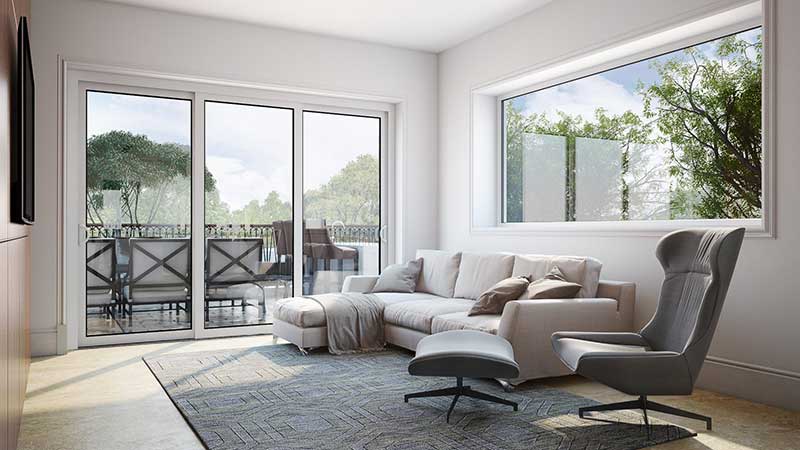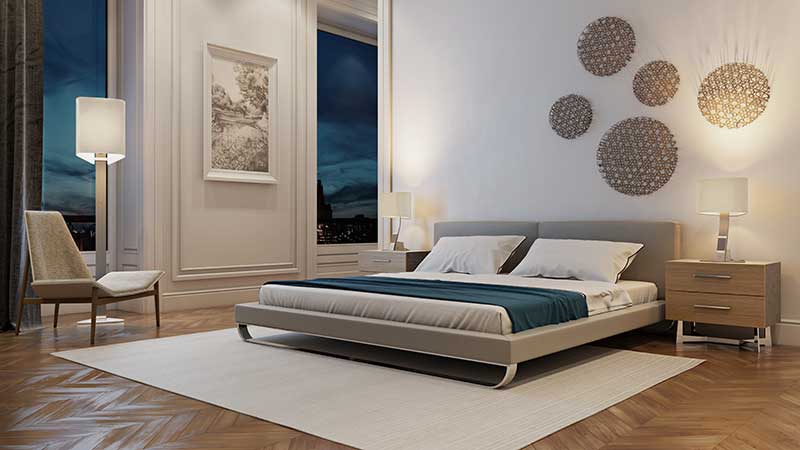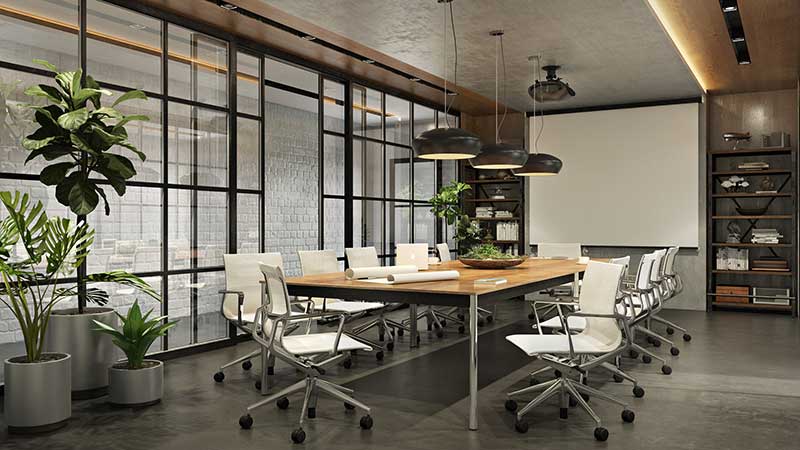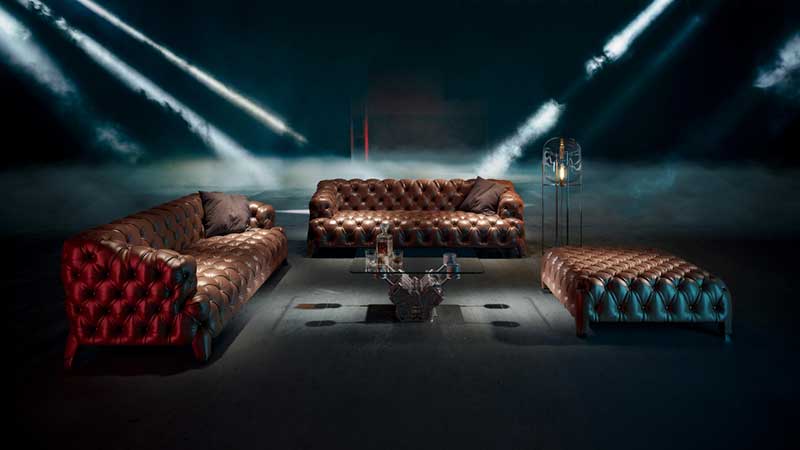3D Lighting Techniques
5 Types of Lighting to Use in a Lifestyle 3D Scene
Lifestyle images always sell products better than white background photos because they create a certain mood and ambiance. They make an emotional impact on buyers and promise them a new lifestyle from now on if they buy a product. Therefore, manufacturers and marketers want images to be highly photorealistic and awe-inspiring. And 3D lighting techniques are the essential ingredient of a successful 3D product rendering.
Due to poorly regulated lighting, the whole roomset may look too dark and even gloomy. Of course, that’s not the kind of mood brand marketers are going for. Or on the contrary, when the light is too bright, it makes all objects look flat and unrealistic. Naturally, this kind of image does no justice to the item either.
So what lighting solutions can you ask from 3D artists to get 100% photorealistic jaw-dropping visuals? Read on 5 key 3D lighting techniques and why they are vital for stunning product lifestyles.
#1. Directional Lighting

The direction lighting technique creates direct parallel beams from a bright light source. Most commonly, it serves as the main lighting point which is the sun in real life. You can change its brightness and color using special settings in 3D software or regulate them by moving the light source in 3D space. For example, when 3D artists place a directional light source closer to a 3D roomset, it gives harsh illumination. On the contrary, when moved somewhat farther on, “the sun” shines softer and more naturally.
Of course, all 3D programs have different settings for directional light and some are more spectacular than others. For instance, 3D Max lighting techniques allow changing the type of lighting by moving the light source along the axis of the coordinate system. When the point is at the zenith, the sun is white and bright as it is in the afternoon. But the smaller the angle, the closer it is to dawn or sunset. Therefore, the sun becomes more orangey-red and casts harsh long shadows as we see in real life.
#2. Point or Omni Lighting
 Point or omni light is a lighting technique that is based on a small light source that casts illumination in every direction. This type of lighting has no specific shape or size, it’s literally just a shiny point that casts bright light and creates deep shadows with blurred edges. This technique is a perfect choice for small built-in lighting fixtures, candles, lamp bulbs, sconces, and so on.
Point or omni light is a lighting technique that is based on a small light source that casts illumination in every direction. This type of lighting has no specific shape or size, it’s literally just a shiny point that casts bright light and creates deep shadows with blurred edges. This technique is a perfect choice for small built-in lighting fixtures, candles, lamp bulbs, sconces, and so on.
Of course, using point lighting alone is not enough to fully illuminate the room — this 3D lighting technique just adds coziness to the space in general. Therefore, to make well-regulated lighting for lifestyle rendering, 3D experts use omni lights for small decorative lamps and choose other 3D lighting techniques as the main illumination – the directional or area light.
#3. Area Lighting

The area light is the only 3D lighting illuminant that has a flat shape, usually, a rectangle or a circle. This source also shines in all directions and casts soft diffused lighting and shadowing. Therefore, it’s a perfect option when you need to subtly emphasize certain areas of the room.
The area lighting technique is most often used for ceiling light fixtures and cornice lighting. Its brightness, the diameter of the glow and lighting attenuation can be easily adjusted in 3D soft to blend in with other sources. Usually, the area lighting makes a great combo with other 3D lighting techniques and adds glowy nuances to the realistic illumination of the whole roomset.
#4. Spot Lighting
Spotlighting is the most dramatic out of all 3D lighting techniques. Its cone shape resembles a spotlight that we can usually see in theater illumination. This light source produces a well-directed circular spot of light and spectacular deep shadows. Of course, its spot diameter and light intensity can be easily changed in 3D software to suit artistic purposes.
When properly set up, the spotlighting technique can be used for reading lamps in the interior and in street lamps for outdoor scenes. But most importantly, such a technique works perfectly for hero shots when you need to draw all the customer’s attention to one particular object in the scene. A spotlight creates a dramatic statement and sets the product listing apart from all competitive offers on the market.
#5. Global Illumination
Global illumination is one of the most complicated and impressive 3D lighting techniques because it simulates natural lighting in the way closest to real-life conditions.
To create this type of lighting, 3D software calculates an algorithm for bouncing light from every surface it hits. This algorithm technique combines the main light and all additional sources in such a way that allows the creation of the most natural lighting for both daylight and night scenes.
For a daylight lifestyle, this technique calculates direct sunlight, adds reflections from all surfaces, and one or two additional sources – and blends them together to create an airy and sunlit space. As for evening roomsets, the global illumination technique combines all artificial light sources, such as spot, area, omni lights, and reflections from objects in a scene. Unlike spotlighting, which provides somewhat theatrical stage lighting, the global illumination algorithm creates a 100% natural ambiance.
Although we covered each of the 3D lighting techniques separately, 3D artists usually use several of them together in one lifestyle scene. Most often, they put two or three different types of lighting in a roomset, depending on the task.

Of course, these techniques require certain scientific expertise to use them properly. A 3D specialist has to understand the optics and the physics of light to adjust the lighting for the most natural effect. Therefore, manufacturers and marketers should work with professional 3D artists who have all the skills and knowledge of such techniques to create truly photorealistic renders.
Need an impressive 3D scene for your product? With our 3D rendering services, you will get equally photorealistic lifestyles for natural ambiance and scenes with dramatic lighting.




